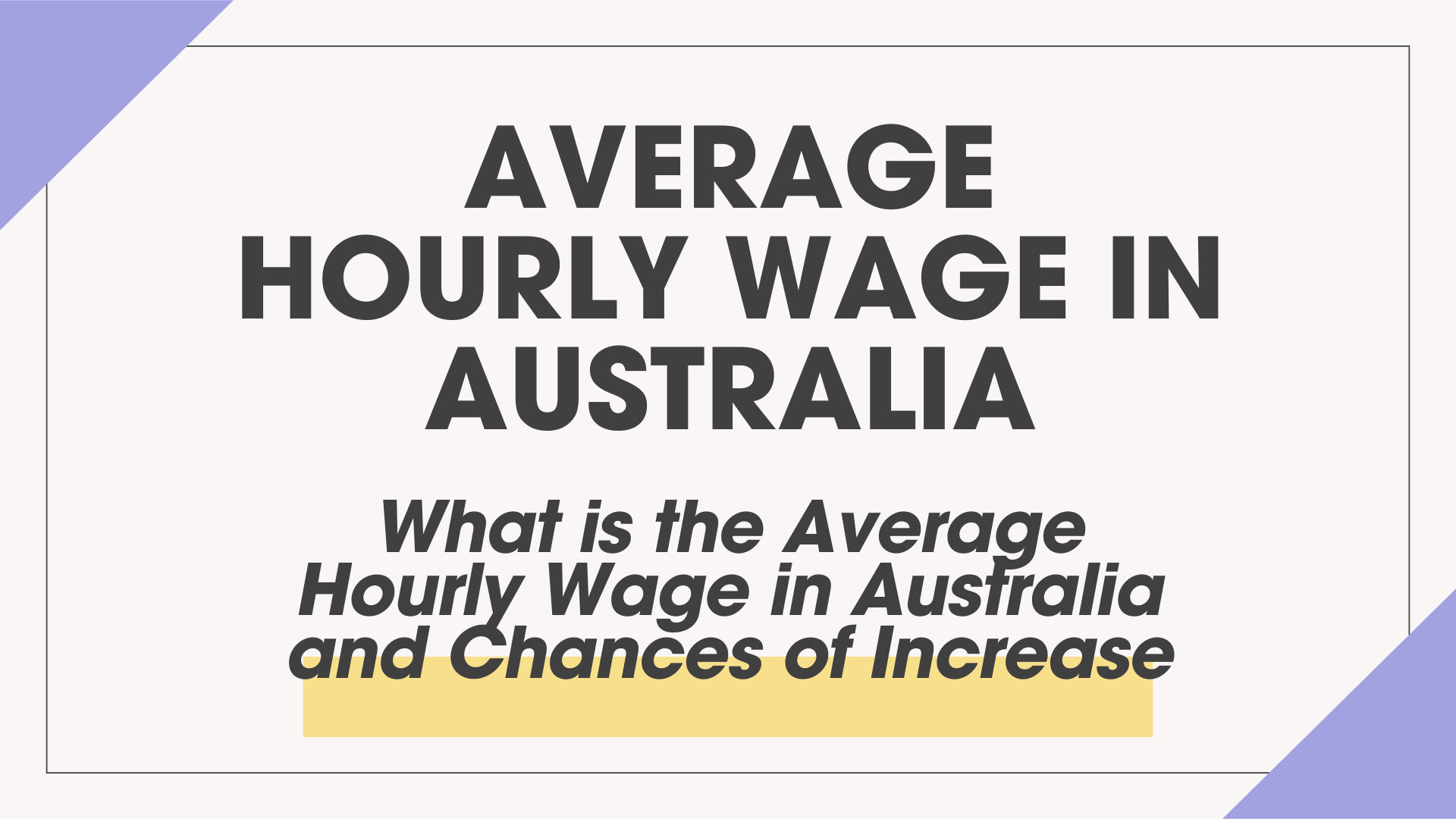If you are planning to work or are currently working in Australia, then you should read this post on Average Hourly Wage in Australia: What is the Average Hourly Wage in Australia and Chances of Increase.
Average Hourly Wage in Australia
One of the many reasons why Australia is one of the greatest locations to live, work, and visit is the country’s set average hourly wage. A livable salary that covers workers’ essential expenses and helps them maintain a respectable level of living is what the minimum hourly wage is intended to achieve.
Based on recent employment data, the average Australian worker makes slightly under $1400 per week. The average pay in Australia is reportedly around $100,000 per year, $1996.40 per week, and $43.50 per hour. However, these numbers are averages and might differ significantly according on a person’s occupation, industry, location, and experience level.
In this article we have discussed in detail the Average Hourly Wage in Australia, we have also provided the current rate and expected increase.
What is the Average Hourly Wage in Australia?
In March 2025, the average Australian hourly pay was $40, a 30 cent increase from the month before. The median weekly pay has increased by $96 from August 2025 to $1,396. There has been a $0.30 increase in the median hourly wage from August 2025. Part-time employees make $691 a week on average, while full-time employees make $1700.

Half of the overall income distribution earns more than the median salary, while the other half earns less. This is known as the median wage. Government policies that alter Australia’s tax bands or raise the statutory minimum wage have the potential to affect total wage growth.
Additionally, the average yearly compensation for entry-level professions is $69,801, although the majority of experienced professionals earn up to $138,419 annually. A number of variables, including job position, industry, years of experience, credentials, inflation, job ranks, and geography, might affect the average wage.
More Information: Get Here
Chances of Increase in Average Hourly Wage
A number of criteria, including as the Australian cost of living, inflation rates, and economic conditions, are taken into account when the minimum wage is reviewed annually. In addition, a number of awards and registrations that specify certain pay conditions for distinct age groups and work arrangements regulate wage rates.
Through the pay Price Index (WPI), the Australian Bureau of Statistics (ABS) reports the yearly pay growth rate. Unaffected by shifts in the quantity or quality of work done, the WPI tracks variations in labor costs across time. Following a period of relatively low growth, pay growth has recently experienced a tiny upswing, according to the most current ABS statistics.
The growth rate of Australian wages slowed from 4.1% in the June quarter of 2025 to 3.5% in the September quarter. Wage growth has been over 3.0% annually since late 2022, which is much higher than the long-term average of 2.4% annually. Therefore, it is anticipated that average wages would rise at a comparable rate in 2025.
Conclusion
Since annual wage growth reflects shifts in productivity, cost of living, and general economic success, it is a crucial indication of the state of the economy. Inflation, the state of the economy, and modifications to industrial relations laws are some of the variables that might affect Australia’s yearly average pay growth rate.
In order to preserve buying power, income growth must keep up with living expenses. Future developments influencing the global economy and domestic economic policy will continue to influence Australia’s average pay growth trajectory.
Thanks a lot for dedicating your precious time in reading out this post on Average Hourly Wage in Australia, with our web portal, please keep coming back for more such content.
